Julia Kelly's Blog, page 8
December 22, 2019
The Women Who Freed a Man for the Fleet—And Much More

Courtesy of the Imperial War Museum
As a historical fiction author writing books, I’m continually amazed at the many—often unsung—ways women contributed to the war effort in Britain during World War II. The Lightseekers is an ongoing series of articles that highlights some of their work and the ways they brought light to Britain in one of its darkest times.
When the National Service Act was passed in December 1941, all unmarried British women and childless widows between the ages of 20 and 30 found themselves staring down the possibility of being called up. However, since the start of the war, thousands of women had already joined the three major military auxiliary services meant to support the army, navy, and air force.
The Navy’s auxiliary branch was called the Women’s Royal Naval Service (WRNS). At one point during the war, posters shouted “Join the Wrens—free a man for the fleet,” encouraging women to choose the popular—and poshest—auxiliary. Even the Wrens smart blue uniform was considered enviable.
“The Wrens officer’s uniform was a lovely dark navy and it was the most coveted uniform by a mile,” Laura Clouting, curator of the Imperial War Museum exhibition on Fashion on the Ration, told the Telegraph in 2015. “A lot of women wanted to join the Wrens purely to get that uniform. The ATS uniform was not quite so loved, despite Princess Elizabeth being its most famous member.”
Wrens were expected to take on roles that would allow men to deploy to much-needed combat roles at sea. This meant that after completing her training, a Wren could be asked to serve as a clerk, cook, mechanic, driver, or weather system and radar operator. Some women were even trained to fly and transport planes from factories to bases for the Navy’s Fleet Air Arm.
The Wrens served both at home and overseas. Australia, Canada, India, and New Zealand all had different versions of the Royal Naval Services.
As conscription grew to include women up to 43 years of age, the number of Wrens in services swelled. It was at its largest with more than 74,000 women working in the auxiliary in 1944.
Like their sisters in other auxiliaries, the Wrens weren’t immune to the dangers of war despite not holding combat roles. 303 members of the service lost their lives during World War II.
If you would like to read more about the extraordinary work that the Wrens did during World War II, the BBC’s WW2 People’s War archive has a dedicated page with transcripts of oral histories that you can access.
Read every story of the The Lightseekers in the series archive. You can also learn more about their stories by following the hashtag #TheLightseekers on Instagram , Facebook , Twitter , and Pinterest .
December 8, 2019
Recruiting Women to the Armed Forces in WWII
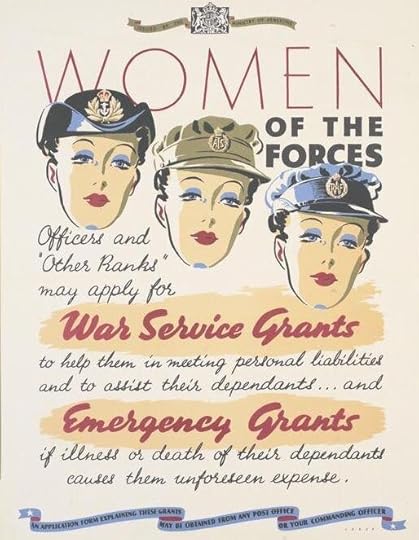
As a historical author writing about WWII Britain, one of the things I’m most interested in doing with my books is telling the often-neglected stories of women’s contributions to the war. One of the areas where women were vital was in the various armed services, and you only need to look to recruitment posters to understand how important women’s work was during war.
(All images are courtesy of the Imperial War Museum.)
Conscription in World War IIAt first, it was just men who were required to go to war. In the spring of 1939, the Military Training Act passed through Parliament and meant that men between the ages of 20 and 22 were required to do six months of military training. However, when war was declared on September 3rd, the National Services (Armed Forces) Act put into place for all men 18 to 41, although some who were in Reserved Occupations—farming, medicine, engineering, etc.—were excepted from service.
In December 1941, women faced conscription for the first time in the second National Service Act. Men up to the age of 60 were no required to serve, with those as old as 50 being eligible for military service. Childless women between 20 and 30 could be called up to one of the auxiliary services. These included:
Women’s Royal Naval Service (WRNS)
Auxiliary Territorial Service (ATS)
Women’s Auxiliary Air Force (WAAF)
Women’s Transport Service (WTS)
Women’s Voluntary Service (WVS)
Women’s Land Army
In order to say some say in which auxiliary service of the armed forces they ended up in, many women chose to volunteer for a particular service. Recruitment posters from that time show that the services tried to play on a sense of glamor and duty.
WRNSThe women’s auxiliary branch of the Royal Navy, the WRNS (nicknamed “The Wrens”) was the most glamorous of the services. It was known for attracting a posher class of girl, and was thought to have the best uniforms. A Wren might be assigned from a wide variety of roles, including cook, clerk, switchboard operator, electrician, motorcycle dispatch driver, or air mechanic.


ATS
The Auxiliary Territorial Service was the Army’s women’s auxiliary. (It is the ATS that Louise, the heroine of The Light Over London joins early in the book.) These women could take on roles as varied as spotlight operator, Ack Ack Command, clerk, cook, munitions, mail service, and more.






WAAF
The WAAFs supported the Royal Air Force throughout the war. These women could be asked to pack parachutes, crew barrage balloons, cook, maintain aircraft, or work in meteorology or radar. Some did intelligence work, such as working on codes or analyzing reconnaissance photography. What the WAAFs did not do, however, was serve as crew on aircraft. That role was taken on by the women of the Air Transport Auxiliary (the “Atta Girls”) who were civilians.
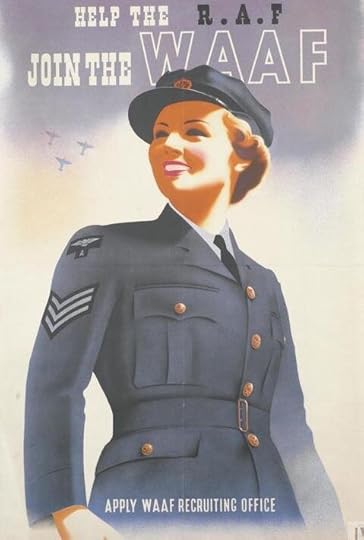



Land Girls
Although not members of the armed forces, the Women’s Land Army—known as the Land Girls—were vital to keeping Britain fed. The women who became Land Girls did agricultural work. It was often hard physical labor, and it could be an isolated existence because often they lived on the farms where they worked. (Bunking down in town became more common in the last years of the war.)
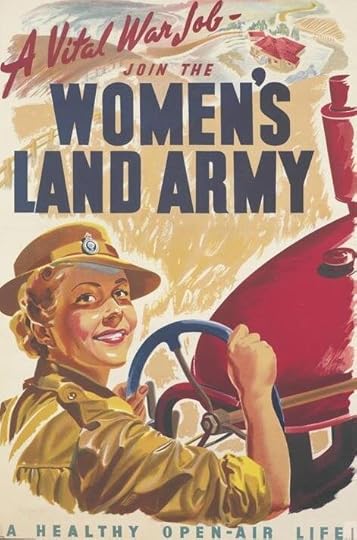
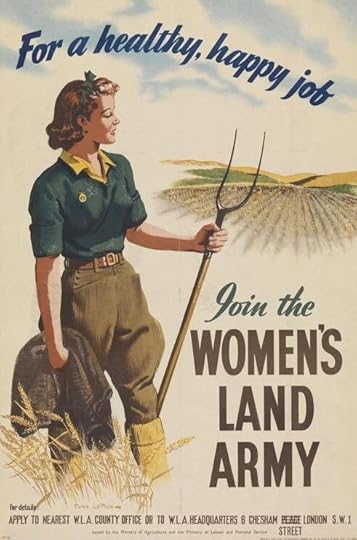
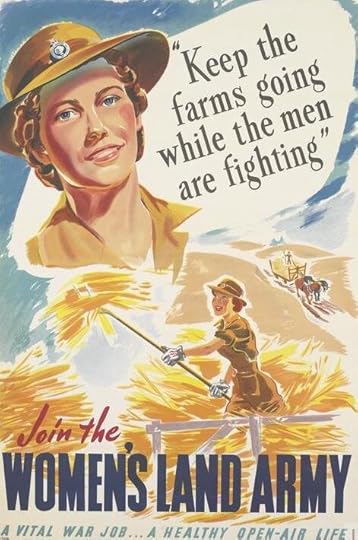
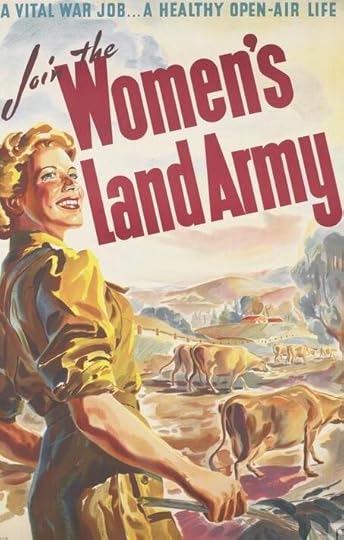
November 14, 2019
November 1, 2019
Join Me and Write Your Book
Today marks the start of National Novel Writing Month (aka NaNoWriMo) when millions of people take on the somewhat crazy task of writing 50,000 words in the month of November. That’s about the length of The Great Gatsby, but don’t let that marker intimidate you! The book you write for NaNoWriMo doesn’t have to actually be The Great Gatsby.
If you’re an aspiring author, NaNoWriMo is an opportunity to challenge yourself to do something you’ve always wanted to do but haven’t yet—get that first manuscript down on paper. If you’re a published author like myself, it’s one of the best ways I’ve come across to produce a huge amount of editable work in one fell swoop.
This month, I’m going to be creating a series of videos about my experience with NaNoWriMo, tips and tricks I’ve learned along the way, and some writing advice that might be useful to you if you’re following along.
Here are two videos to get you started:
I’ve also created a new section of my site under For Writers called Writing Your Book. There you’ll find an ever-growing collection of videos, articles, and more helpful content to get you going or motivate you to push through your draft.
Good luck, and do let me know how your book writing experience goes!
October 14, 2019
Researching Your Family’s WWII History
Since The Light Over London has come out, I’ve received dozens of emails from readers telling me about their personal connection to the book. In several cases, the children of Gunner Girls have reached out to say that reading the book inspired them to dig in and research their mother’s history in the service. However, the research process felt daunting, and they didn’t know how to get started.
After sending several people information about accessing British service records, I thought it was probably time to write an article giving some guidance about how you can research your family’s wartime stories.
(Authors, a lot of these suggestions can be used if you are researching a WWII-set book.)
Getting started
We all know the expression knowledge is power, and starting a research project is no different. You likely already have some of the pieces you need to start your search, such as:
Name
Maiden Name
Date of birth
Hometown
Branch of service
Years served
Locations of service
Rank
The more information you have, the better. However, don’t be discouraged if all you know is your family member’s name and branch of service. You still have a good starting place.
If your family member is still alive, I would recommend speaking to them about the war. Some of the richest stories you’ll find are the first-hand ones passed from generation to generation.
If your family member served in World War II...
Here are some resource that can help you get started.
In the UK
The Imperial War Museum has a great guide for navigating different databases and other resources.
Tracing Your Family (Imperial War Museum)
The Commonwealth War Graves Commission can help you find a war grave or a cemetery or memorial.
Commonwealth War Graves Commission
If you are looking for access to your own service records, this website can help:
Apply for your own service records
In the US
The National Archives has an excellent page that highlights the various databases and lists of US service members.
It also produced a brochure to show family members how to find information about a person’s participation in the war.
Finding Information on Personal Participation in World War II
CA resources
The Library and Archives Canada’s guide helps family members find service records, military medals, and more
Second World War: 1939 to 1945
If your family member was on the UK Home Front…
Obviously, not everyone fought in the war. People did many things on the Home Front to both further the war effort and maintain as much of their normal lives as they could. You may find it helpful to look to books and documentaries to learn more about living in Britain during the war to find out what you family family members might have experienced.
The 1939 Register was taken just after war broke out. It provides a look at the civilian population of England and Wales. You can use it to find out more about your family.
The Mass Observation diaries are an incredible resources to historians and curious historical fiction readers alike. A country-wide sociological experiment, people from a large swath of social backgrounds and geographical locations sent in records of their daily lives. This is a wonderful way to get a snapshot of the area your relatives lived in or the work they did during the war. I used the Mass Observation diaries when writing my upcoming book The Whispers of War.
And finally, the UK has been vigilant about recording as much historical accounts from people who actually lived the war. The BBC has something called the WW2 People’s War project with many different oral histories (some in audio and some in transcript form.) I actually used this resource to learn more about the Gunner Girls’ experience when I was writing The Light Over London.
Persistence is a big part of any historical research project, so don’t be disheartened if you feel like you hit a brick wall. Step back and try to think creatively about where you might look next. Keep talking to family members, digging into archives, and using resources like Ancestry.com and see what family history you can uncover!
October 8, 2019
7 World War II Books Set on the Home Front
When I started writing The Light Over London, I wanted to tell stories I hadn’t seen before. I discovered that there’s a rich tradition of books set on the home front—no matter where that might be. Here are seven historical novels to add to your reading list.
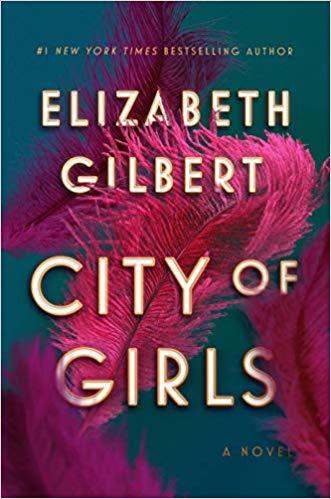
City of Girls by Elizabeth Gilbert
The first thing you should know about City of Girls is that it’s a blast to read. This is due in large part to Vivian Morris, the narrator, who takes you through her debaucherous younger years in New York City’s theater world. Then the United States enters World War II, and she’s forced to grow up quickly. The story becomes more complex, a little tragic, but also wonderfully touching.
The Nightingale by Kristin Hannah
Set in France during the war, this book tells the story of Vianne and Isabelle, two sisters who find themselves handling the German invasion of France in very different ways. Hannah’s writing is sometimes lyrical and she uses some beautiful turns of phrase to describe the sometimes impossible decisions the two women are faced with.
The Shell Seekers by Rosamunde Pilcher
My love for this book is pretty well documented at this point, but I can’t mention World War II fiction without bringing it up again. The Shell Seekers is ostensibly about a woman named Penelope Keeling and her mostly horrible children who are trying to convince her to sell her late father’s painting, which is also called The Shell Seekers. However, it’s much more than that with a narrative that weaves through several time periods—including Penelope’s time in the WRNS during World War II. For Pilcher aficionados, Noel from The Shell Seekers gets something of a redemption tour during September, but I’ll leave you to decide whether he’s really earned it or not.
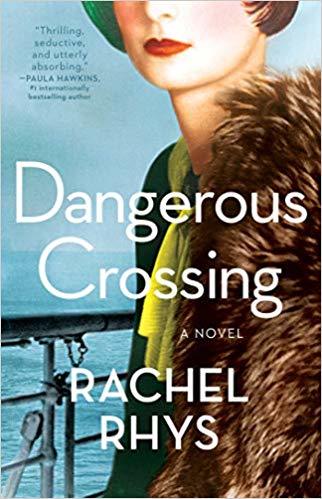
A Dangerous Crossing by Rachel Rhys
The war is a creeping threat in this book, set on an ocean liner bound for Australia on the eve of the German invasion of Poland. The main character, Lily, becomes fixated with a young man who is sailing with her. But the claustrophobia of the ship begins to take hold and bad thing happen the longer they’re out at sea.
The Cazalet Chronicles by Elizabeth Jane Howard
I read the entire five-book Cazalet series between 2017 and 2019, and I would happily do it all over again. The books span the interwar period through to post-war austerity, but the war-time years are really the pivot point of the narrative, highlighting the way the war hurries along the slow descent of one very privileged family.
After the Party by Cressida Connolly
This book starts out like a domestic novel about the county set but quickly twists in ways that—if you don’t know the context of the story—will feel shocking. After the Party is immaculately researched and beautifully written.
The Alice Network by Kate Quinn
Does The Alice Network happen during World War II? No. Is that going to keep me from putting it on this list? No, because this dual timeline book takes place during World War I and right after World War II. This book stands out for me because Quinn beautifully portrays the danger and brutality of the women working as spies behind enemy lies in World War I.
October 2, 2019
The Light Over London Is Now in UK Stores!

It’s an exciting day over here in London because The Light Over London is finally out in UK bookstores!
Last week, US readers got the chance to buy beautiful, dark blue copies of the paperback and now UK readers can get their hands on the UK paperback edition.
If you need some help finding it, check out these fine UK retailers:
Amazon UK | Waterstones | WH Smith | Apple Books | Kobo | Google Play
September 23, 2019
The Light Over London Is Now Out in Paperback!
If you’ve been waiting to get your hands on the paperback of this dual timeline historical fiction, now’s your chance!

This World War II/present day-set book has:
A long-forgotten diary
A dramatic family mystery
Brave, badass women who are as loyal as they are smart
Some swoony love stories
Twists and turns that will keep you guessing until the last chapter
I love all five of those things in any and all of the books that I read, so it’s no surprise that when I went ot write my first historical fiction I wanted to make sure I hit all of those sweet spots.
You can pick up your copy of The Light Over London wherever fine books are sold, including:
Amazon | Apple Books | Kobo | B&N | Google Play
September 15, 2019
Another Epic World War II Story Is Coming Soon

I've been hinting at what my next historical fiction would be about and finally (FINALLY) I can start talking about it.
I’m very proud to introduce you to The Whispers of War, a book that explores how far friendship and loyalty can be pushed during a time of war.
Here's a look at what you can expect:
In August of 1939, as Britain watches the headlines in fear of another devastating war with Germany, three childhood friends must choose between friendship or country. Erstwhile socialite Nora is determined to find her place in the Home Office’s Air Raid Precautions Department, matchmaker Hazel tries to mask two closely guarded secrets with irrepressible optimism, and German expat Marie worries that she and her family might face imprisonment in an internment camp if war is declared. When Germany invades Poland and tensions on the home front rise, Marie is labeled an enemy alien, and the three friends find themselves fighting together to keep her free at any cost.
The Whispers of War comes out almost a year to the day after The Light Over London, and although it isn’t a sequel to The Light Over London, I think you’re going to enjoy returning to the same world for another story of extraordinary women.
The Whispers of War will be on sale in hardcover, ebook, and audiobook at all major retailers on January 14th in North America and January 16th in the United Kingdom.United StatesAmazon | Apple Books | Kobo | B&N | Google Play | Books-a-Million
CanadaAmazon | Apple Books | Kobo | Indigo
United KingdomAmazon | Apple Books | Waterstones | Blackwells | Kobo | Google Play
You can be sure to stay up-to-date with all the latest news about all of my book by signing up for my newsletter. As a thank you, I’ll send you an exclusive epilogue to The Light Over London that answers the question “What happened after the war?”
August 12, 2019
The Light Over London Gets a New Look!
Sometimes change is good, especially when it means the start of something new.

While I adore the The Light Over London's hardcover cover with its beautiful turquoise and yellow, I was pretty thrilled when I saw what Gallery Books had in mind for the US paperback edition!
This beautiful, rich blue cover will be on sale in the US starting on September 24th at all major retailers and many of your favorite indie bookstores, but you can preorder it today to make sure it ships as soon as the book comes out:
Amazon | Apple Books | Kobo | B&N | Google Play
And UK readers will start seeing The Light Over London in stores in October 3. You can preorder it here:



